
Visiting Seattle’s Kubota Garden is like taking a masterclass in the study of form and shape.
Located in the middle of a quiet suburban neighborhood, it’s somewhat of a surprise to find this secret gem of a garden nestled among its residential neighbors.
In the garden is a memorial stone dedicated to the creator of this magnificent garden, with the following inscription:
‘Fujitaro Kubota was born in 1879.. on the island of Shikoku, Japan. He immigrated to America in 1907..and acquired this land in order to make a large garden. With his own hands he cleared the land, dug several ponds and cut the trees to build the garden. Mr. Kubota studied landscaping, suffered hard work, and put great effort into this project. The garden was finally completed in 1962 and in that year this memorial stone was erected. It was the eighty-third year of Fujitaro Kubota.’
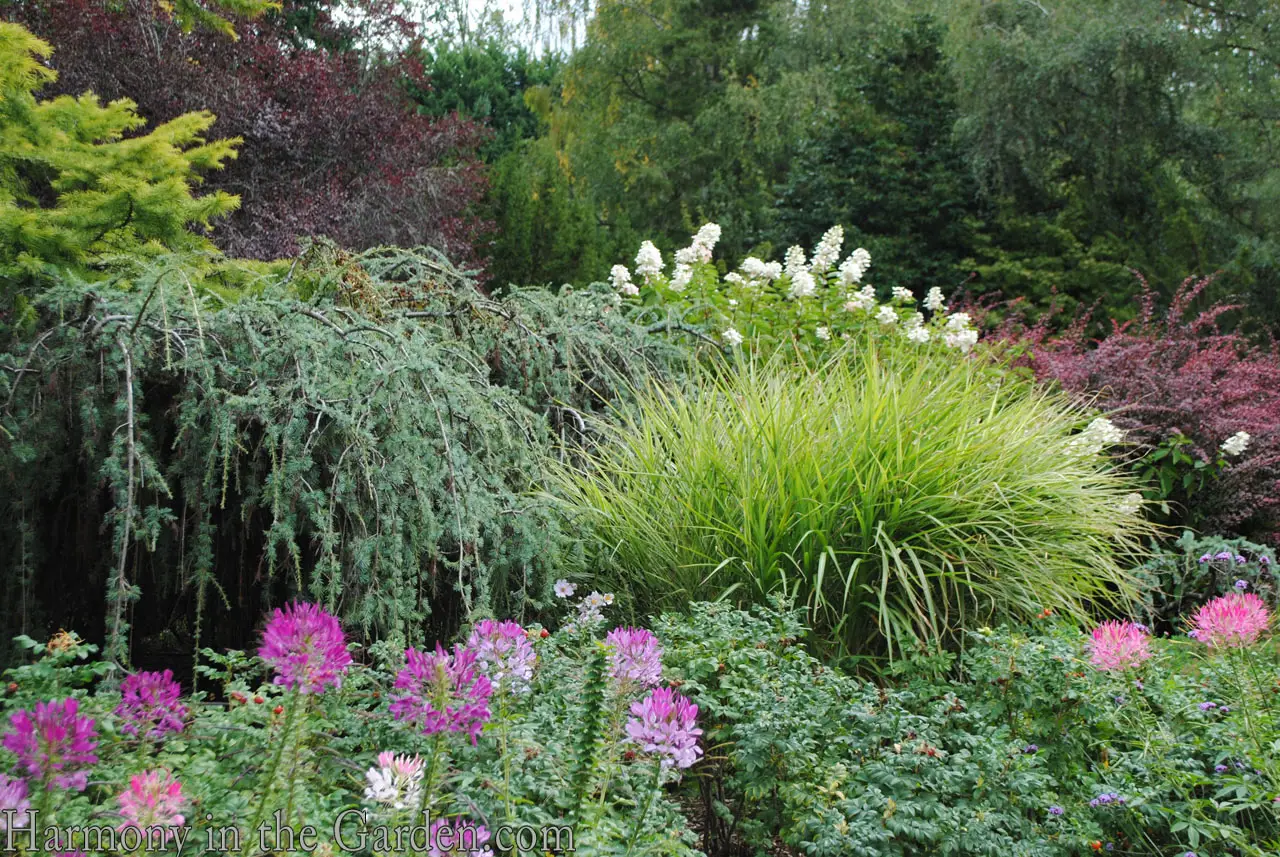
Mr. Kubota not only embraced, but celebrated one of the most challenging principles of garden design – using form and shape to celebrate each plant.
One thing I’ve noticed over the years is that many gardeners are a bit unsure about implementing shape and form into their gardens.
One of the main reasons for this confusion is because the two definitions are so similar.
As subtle as the differences may be, however, each element is distinctly different and once understood can be used to serve various functions in the garden.
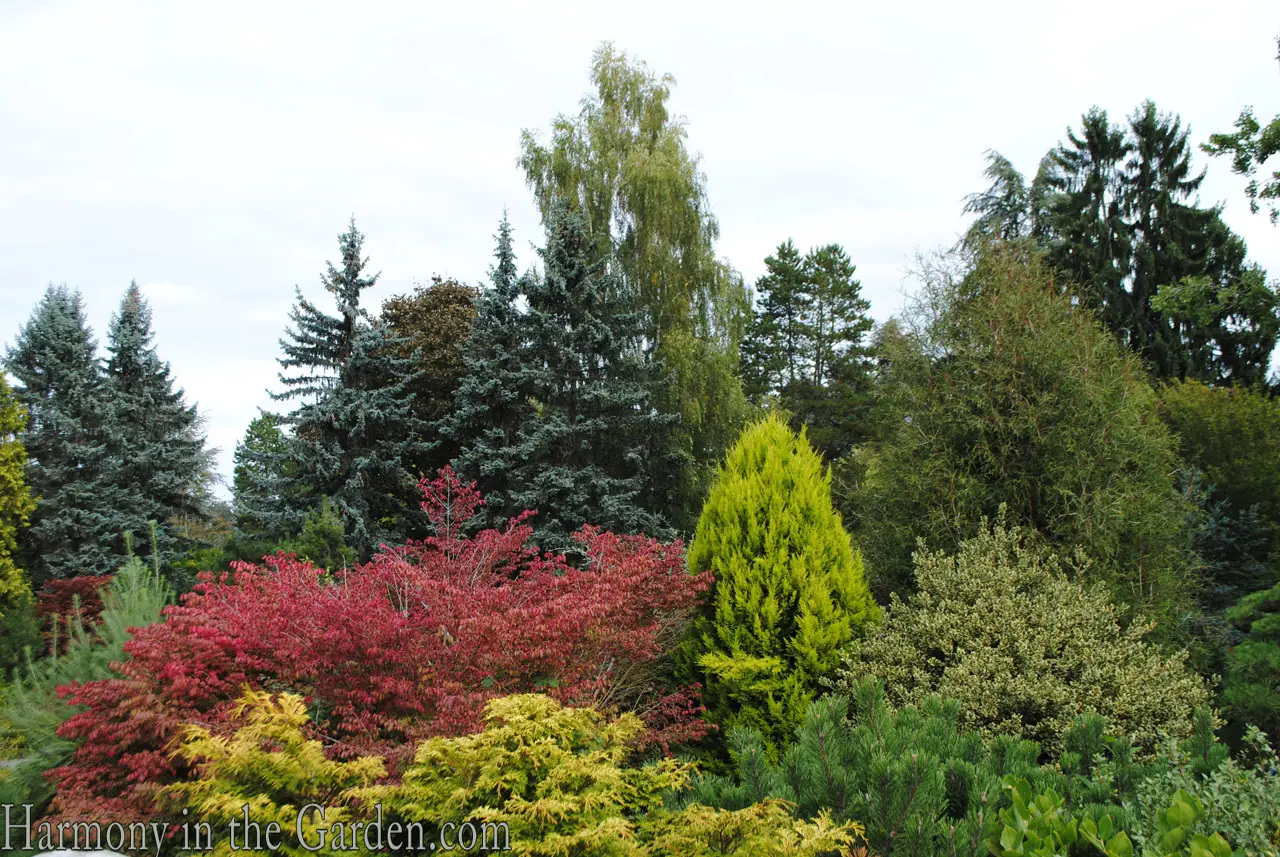
First, let’s spend a moment to discuss Form and Shape.
Form and shape are to good garden design what proper layout, structure and composition are to an inviting and functional home.
Every element in the garden (living or man-made) contains forms or shapes, and similar to a home’s design, performs some of the same functions.
For example, creative use of a plant’s form can direct the line of sight, act as a focal point or divide large spaces.
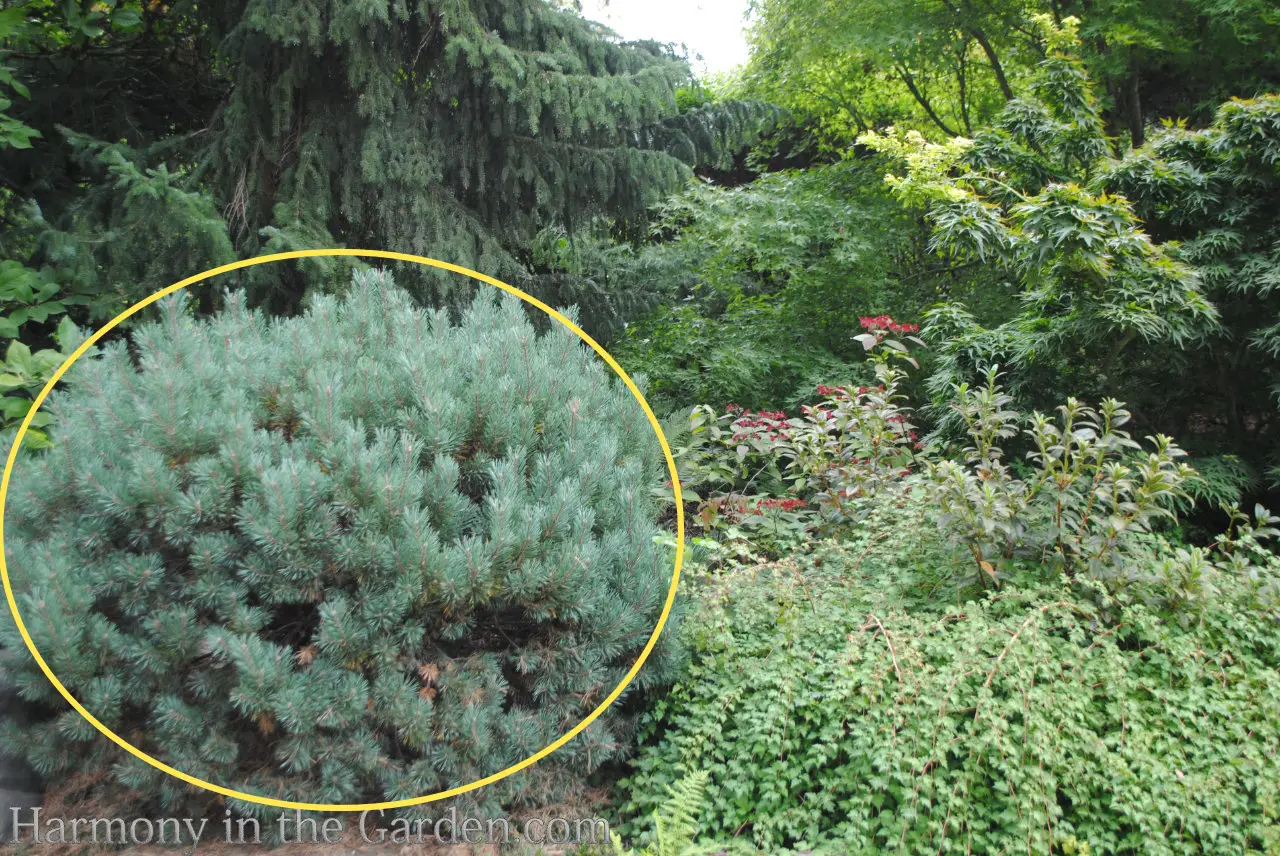
What is Shape?
A plant’s shape refers to its two-dimensional qualities; otherwise known as the outline, silhouette or contour.
For example, when looking at a plant head-on, imagine drawing a line around the general structure of the plant. That line would be considered its shape.
Examples of different plant shapes might include a fountain (ie: Spirea ‘Bridal Wreath’), a vase (ie: Hamamelis or Witch Hazel), a column (ie: Gingko bilobus ‘Princeton Sentry’) or a sphere (ie: Pittosporum tenuifolium ‘Golf Ball’).

When looking at a plant’s finer details, shape typically refers to the outline of its leaves.
Examples such as triangular, round, or heart-shaped (like the viola ‘Heart Throb’, left) are just a few descriptions that come to mind.
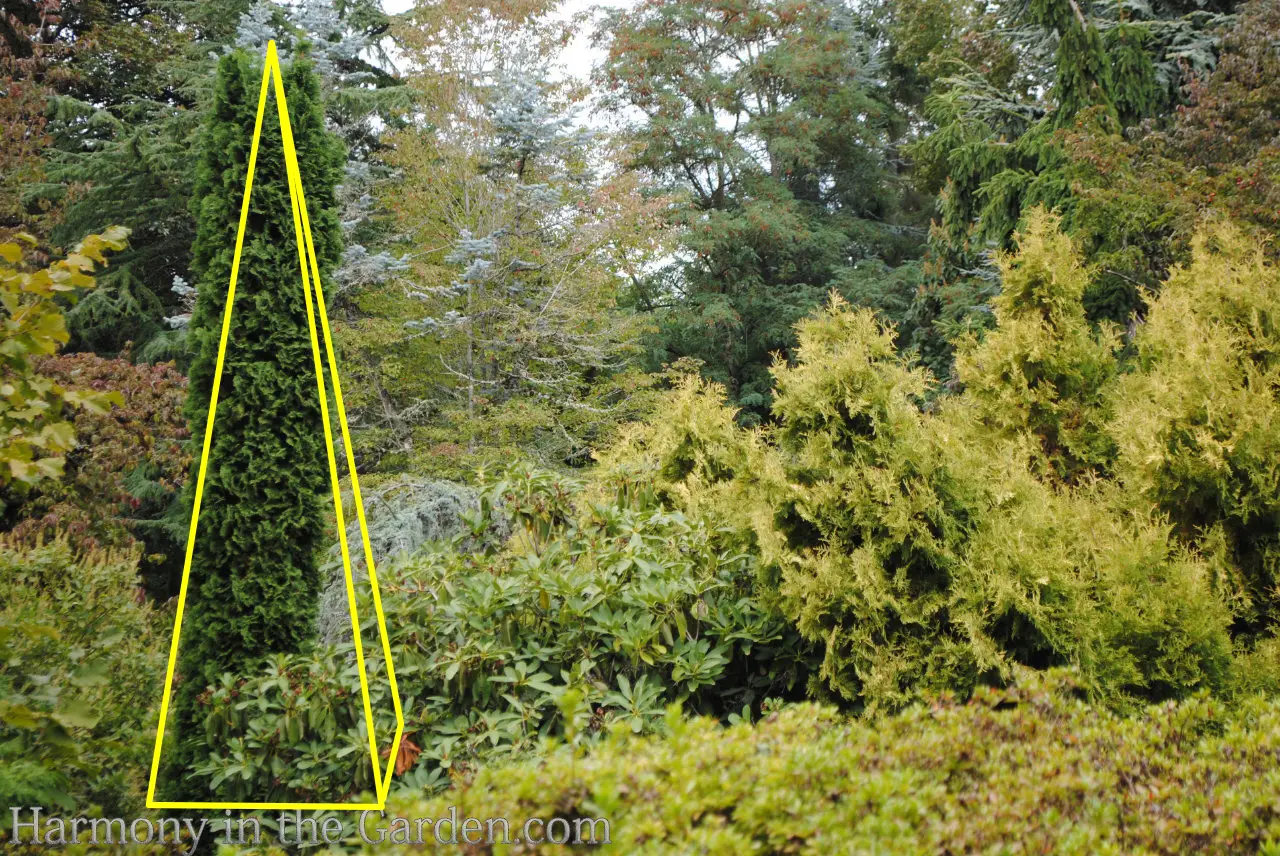
What is Form?
The form of a plant is three-dimensional and includes depth along with the outline or contour.
Another way to define form is the overall shape of a plant when in leaf (the leaves emphasizing the depth).
On the other hand, when plants are dormant (without leaves) it’s their shapes (or two-dimensional outlines) that are most noticeable in the garden.
So now that we know the subtle differences between shape and form, take a look at how Mr. Kubota used them in the garden.
1. Contrast Forms for Visual Interest
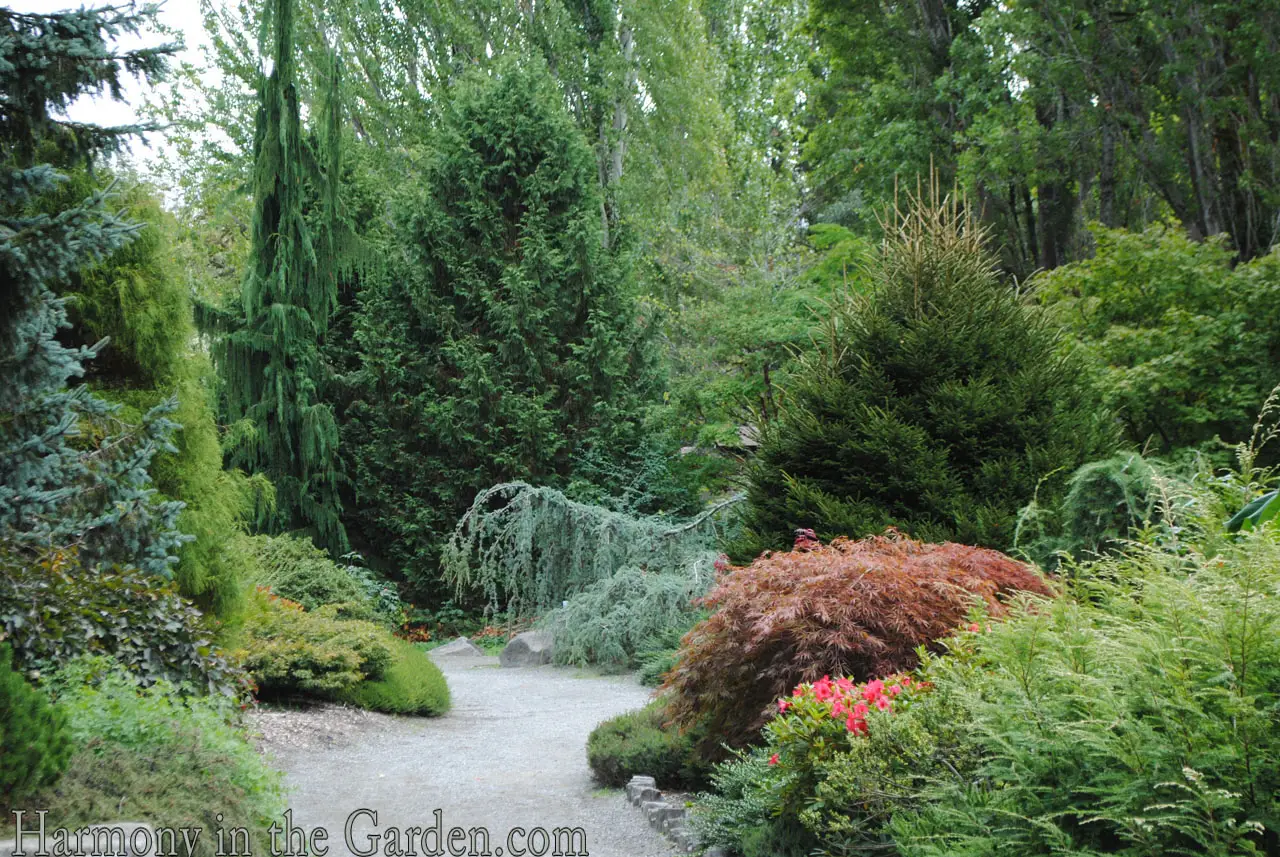
This is a powerful example of creating visual interest using contrasting forms.
Take a close look and you’ll see mounding, weeping, upright, fountain, and conical forms.

The primary colors are green with just a hint of blue and burgundy.
But even with a limited color palette, the combination of different forms results in understated excitement.
Important to note is how the repetition of conical and mounding forms prevents this grouping from looking overly chaotic (preventing the one of this, one of that syndrome!)

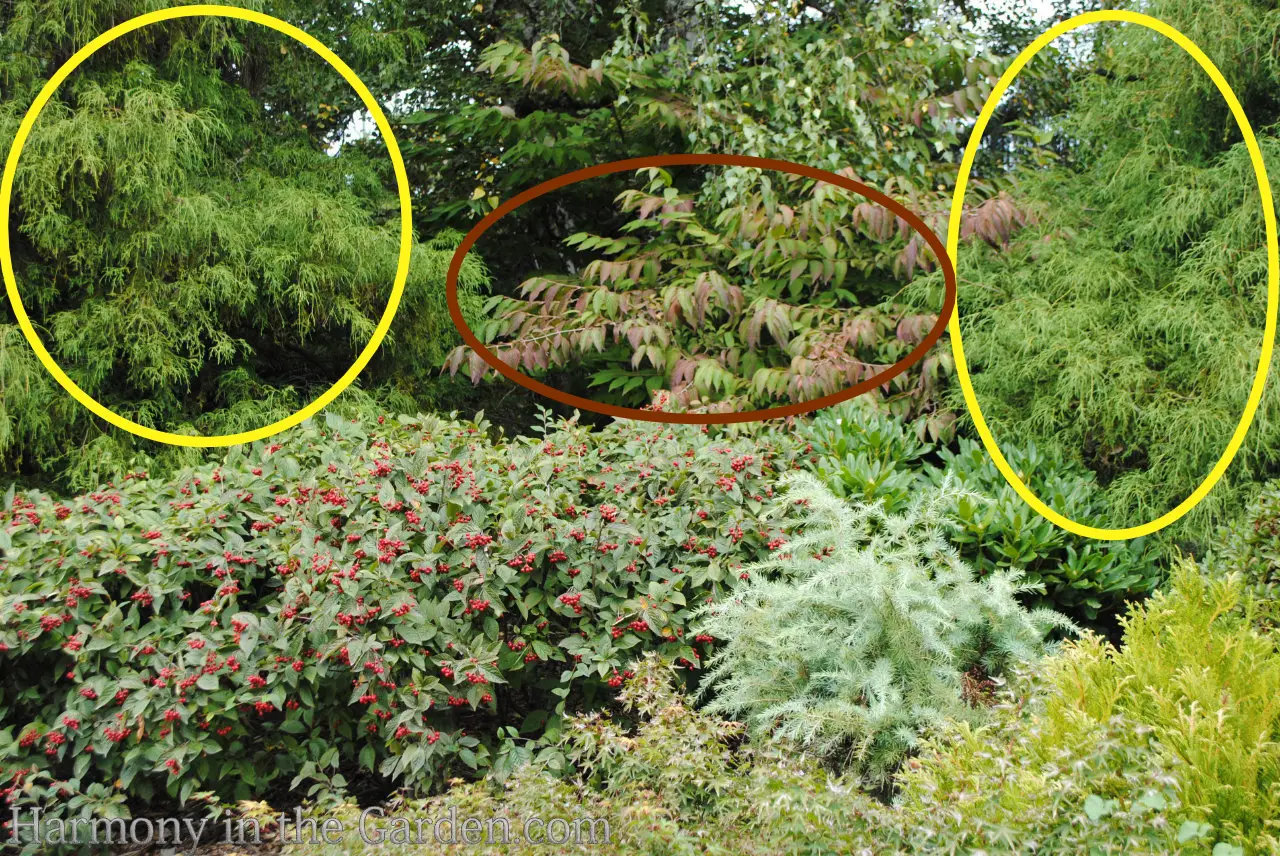
Tip: Use contrast to prevent similar forms and shapes from blending in with one another. In this instance, it’s the contrasting shape and color of the middle plant that allows the finely textured evergreens to shine.
2. Form as a Focal Point

Plants with strong forms or shapes also serve as focal points in the garden,
For maximum impact, use restraint when placing focal point plants in the garden as the goal is for the eye to focus on a single element or grouping.
If too many focal points are planted in a small area, the effect is lost with each plant loudly crying out for one’s attention.
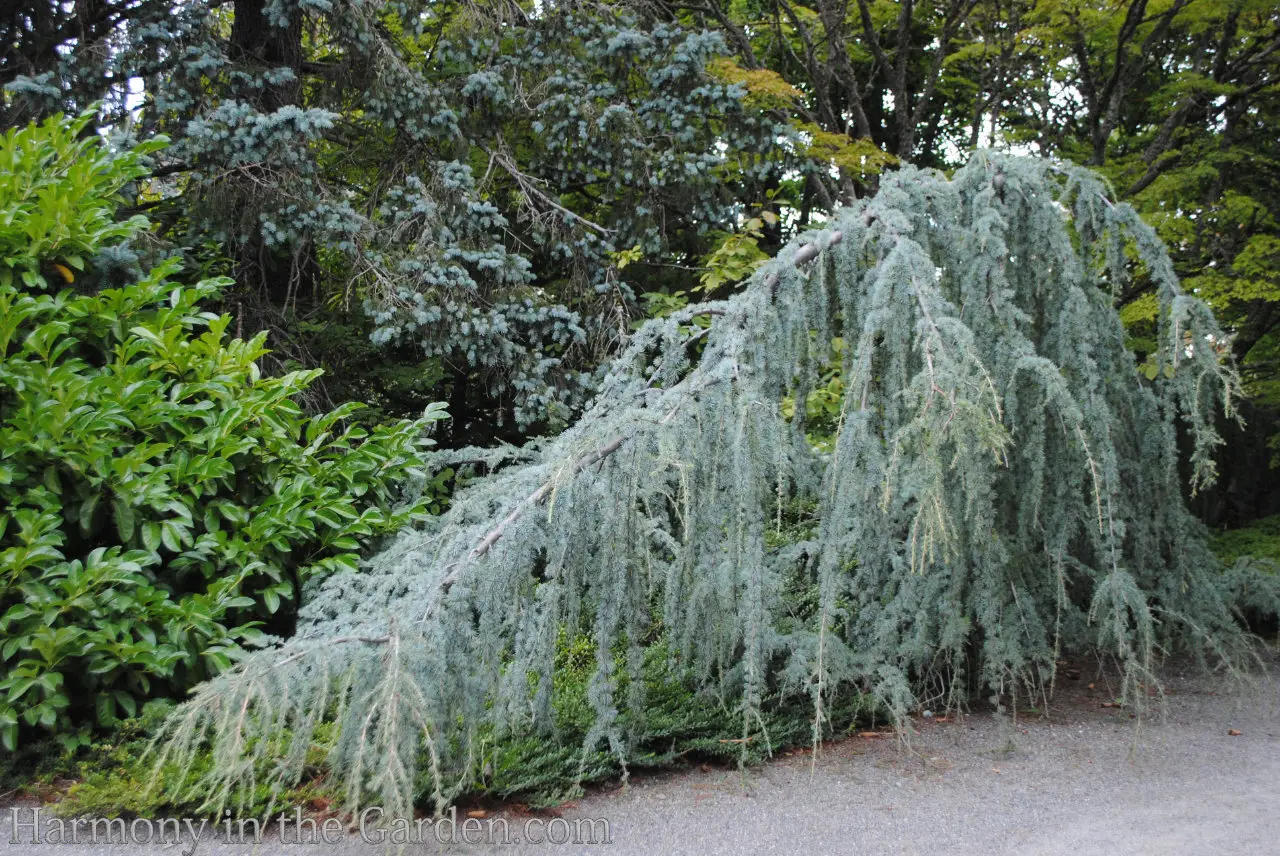
One of the most noteworthy roles of a focal point is to control the line of sight, helping to lead the eye to a specific destination in the garden.
In this instance, the directional form of the blue Atlas Cedar literally points the way!
3. Form as a Supporting Cast
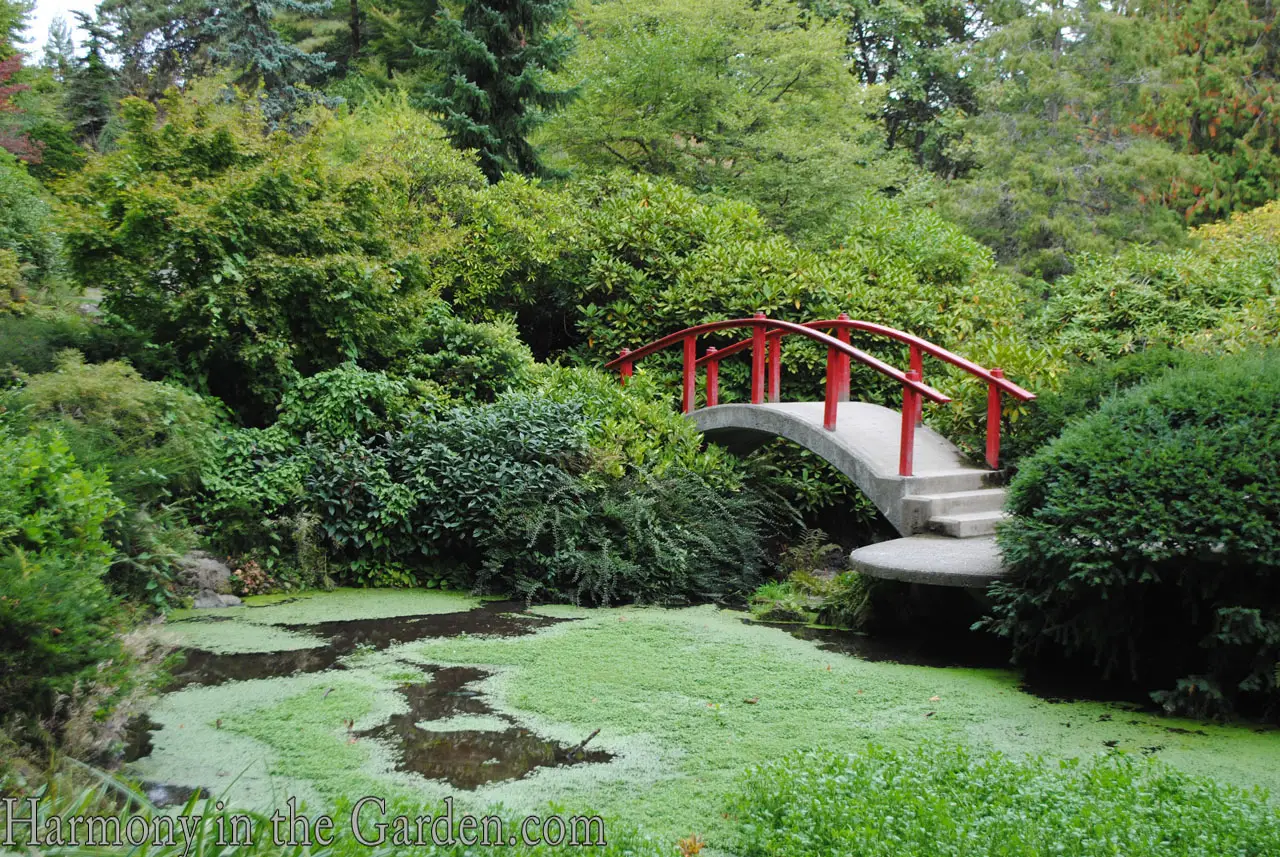
Not all plants need to be the star of the garden!
Contrary to using strong forms as a focal point, a grouping of gentle forms can be used to create a serene backdrop.
The mounding green shrubs in this photo are strategically placed to keep the attention on the focal point – the red foot bridge.
Can you imagine this bridge surrounded by several strong shapes and colors all competing for the spotlight?

On a smaller scale, the gentle mounding forms of the evergreens are used to softly embrace the focal point stone lantern..
Their quiet presence of the shrubs lets the stone lantern shine in this grouping.
4. Capturing Form’s Visual Energy
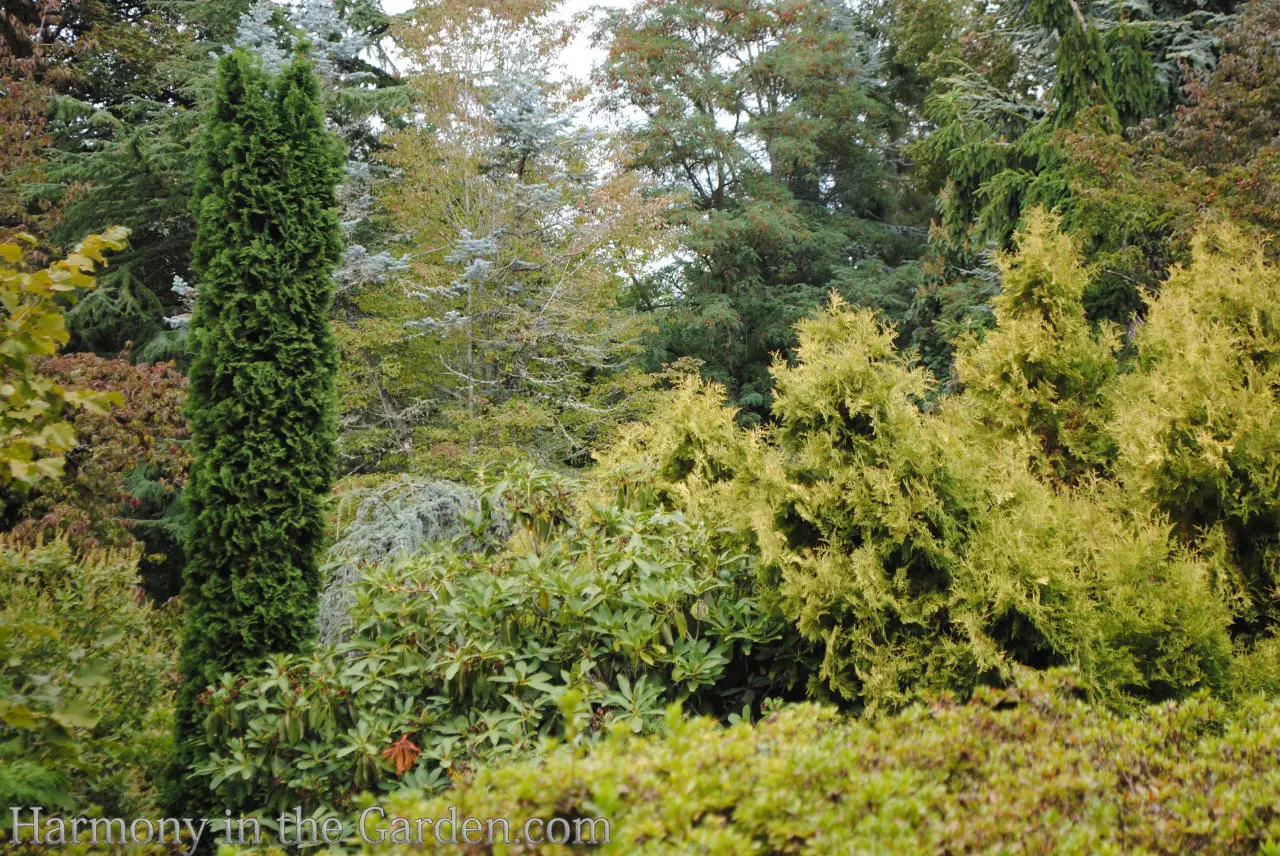
Like rockets exploding in the garden, vertical plants are guaranteed to keep a garden lively.
Consider them your garden’s mid-day shot of caffeine.
When used individually, they act as solitary exclamation points in your garden’s otherwise quiet conversation.
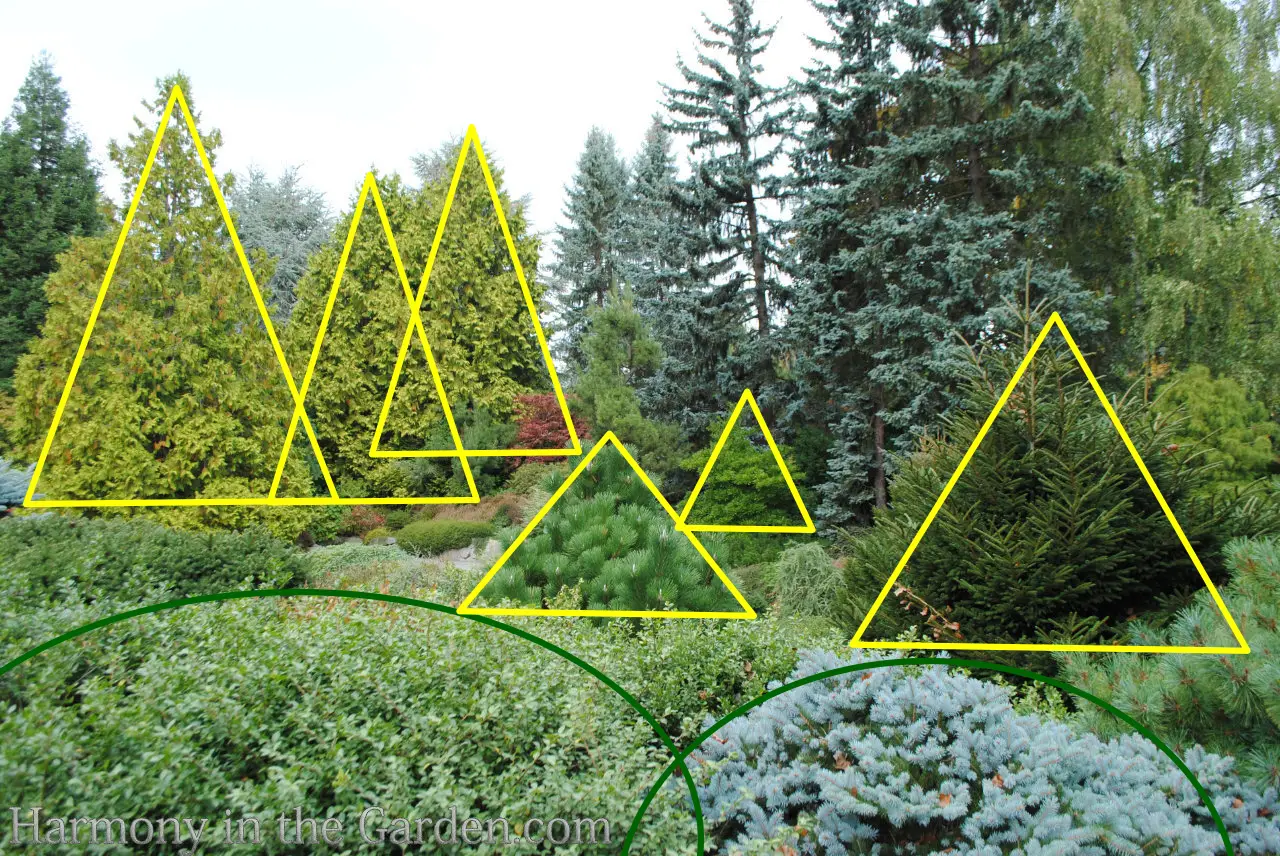
As mentioned earlier, a plant’s form can help direct the line of sight.
In this instance, a grouping of upright forms draws the eye upupwards, emphasizing the expansiveness of the garden.
5. Creativity with Form
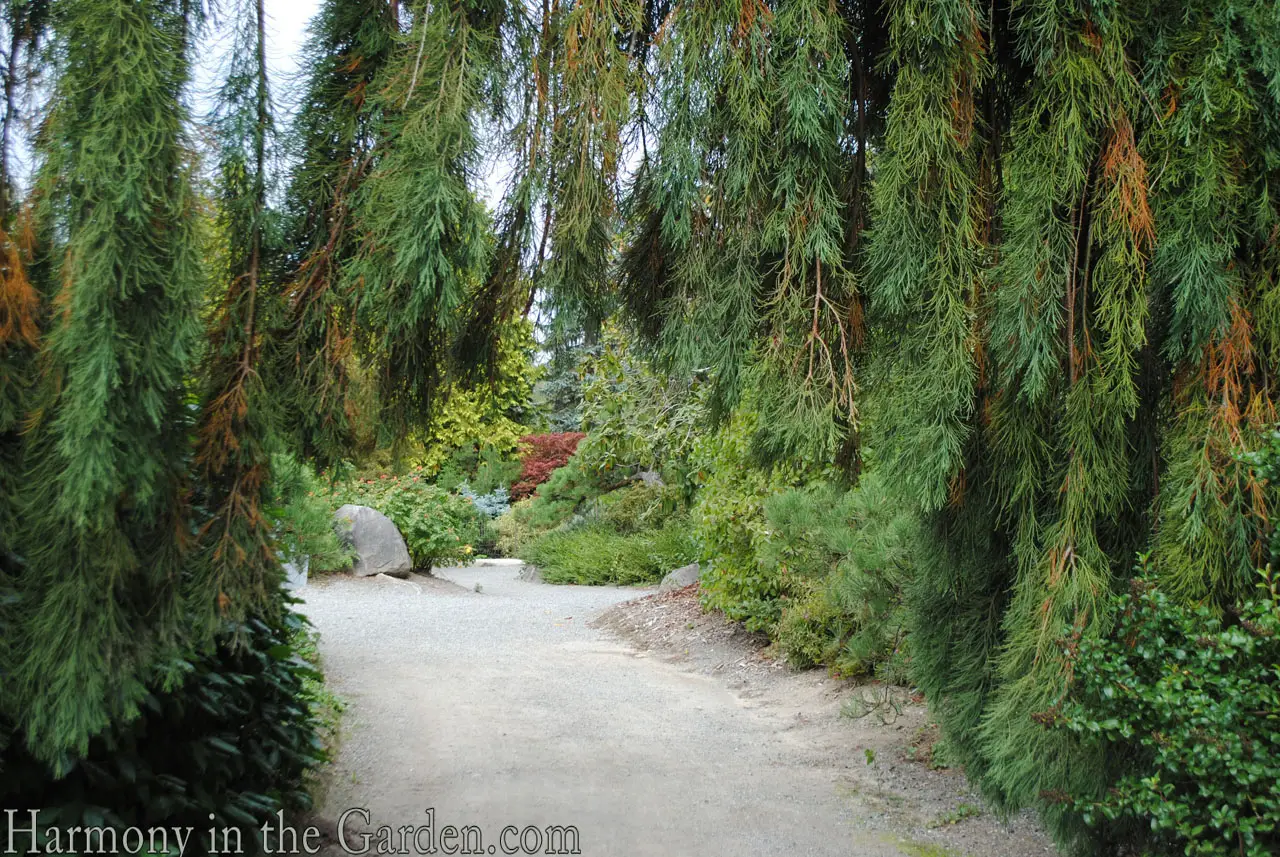
Memorable gardens contain memorable moments, sometimes as a result of a playful sense of humor.
An example of this is the curtain of weeping Giant Sequoia branches that have been cleverly trained to grow over the walkway.
In fact, a woman who is a full-time gardener here left a wonderful comment (read it below) and said they call this the “car wash”.

The creative placement of the Japanese maple’s draping form echoes the neighboring cascading stream that flows around it.
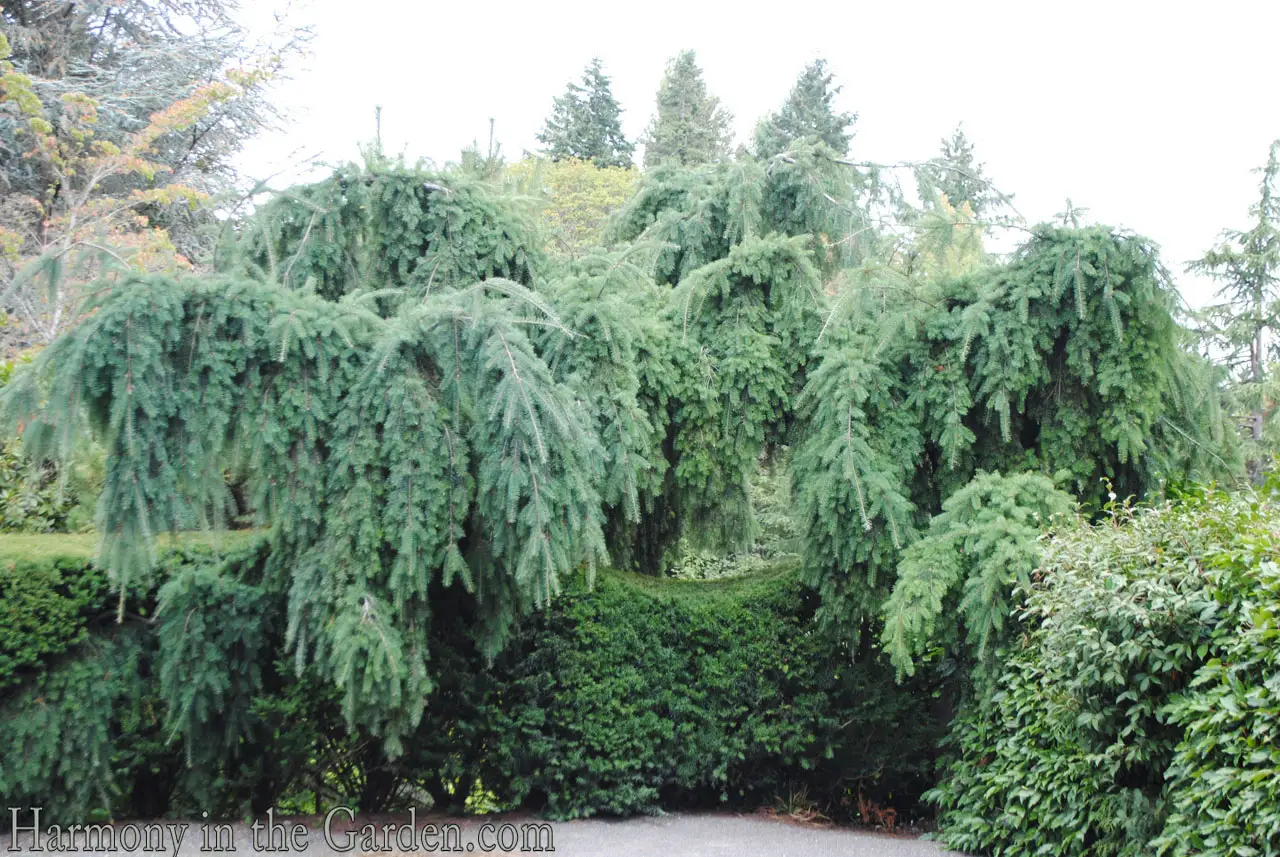
And finally, how’s this for an eye-popping moment? I overheard a nearby child gasp and say ‘it looks like a monster is coming to get me!’
If you’d like to see a few more gardens that have also mastered the use of shape and form, take a look at Northern California’s Filoli Garden and Seattle’s Washington Park Arboretum.
How do you use form and shape in your garden?







8 Comments
Rebecca, Thank you for this blog post!
As one of the fulltime gardeners at Kubota Garden (I work for the City of Seattle Parks and Recreation, which has owned and maintained this amazing public garden since 1987), it was lovely to read your take on Form and Shape as seen at Kubota Garden. One of our volunteers at KG shared this and I am so glad she did. I will pass this on to Mr. Don Brooks, our former Senior Gardener who developed this amazing garden for more than 30 years, retiring from service in 2018. Thanks again for your study and appreciation. PS fun fact: we call the Weeping Giant Sequoia, that drapes across a path, the “car wash”. 😉
Hi Marcia, what a wonderful email to receive from you, thank you!!! I’m so happy you enjoyed my post and shared a little more information about this wonderful garden. Thank you for taking such good care of this special place, and please let Mr. Brooks know how much I appreciate his artistic and skillful talent in developing this garden – it’s truly one of the most beautiful I’ve seen. It’s not easy to ‘get it right’ when it comes to highlighting a plant’s unique form, and he’s a master at it. And I’m absolutely going to insert your ‘car wash’ fun fact – that’s exactly what it looks like!!!
Thanks Rebecca, yes Mr. Brooks is a master who got it right in developing this garden for the public to enjoy! We are very fortunate to have this space, connecting us to what matters most. Please introduce yourself the next time you are in garden, I would enjoy meeting you and thanking you in person.
I’ll definitely let you know when I’m in the area, it’d be so nice to see the garden again and to meet you. Thanks!
Love all these ideas but “Form as a Supporting Cast” is a favorite. The bridge stands out beautifully!
Hi Jim! So glad you liked it – that’s an amazing bridge, isn’t it?
Rebecca Thank you for this wonderful view of one of my local gardens. Looking through your camera’s lens brings a wonderful new perspective and a few lines over the forms gives us such clarity as you make your comments. Your newsletters are always so useful and fun. Aren’t you glad it is almost spring and we can escape into the quiet peace of the garden.
Thank you so much, Joan, and how fortunate you are to live so close to this magnificent garden! Yes, I can’t wait for spring. I walk my garden each morning looking for the slightest hint of leaf or bud while still trying to enjoy all the quiet downtime winter has to offer.